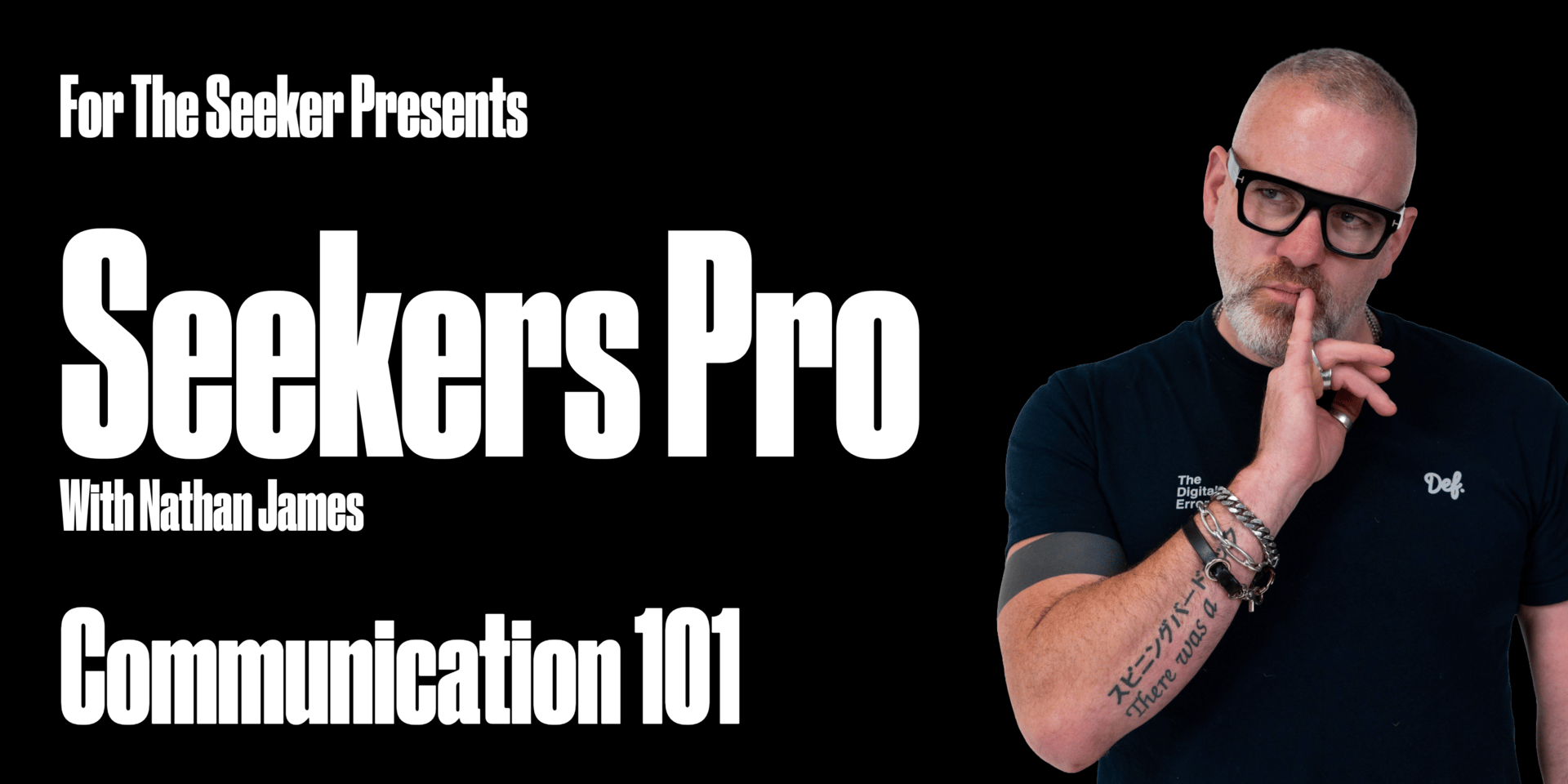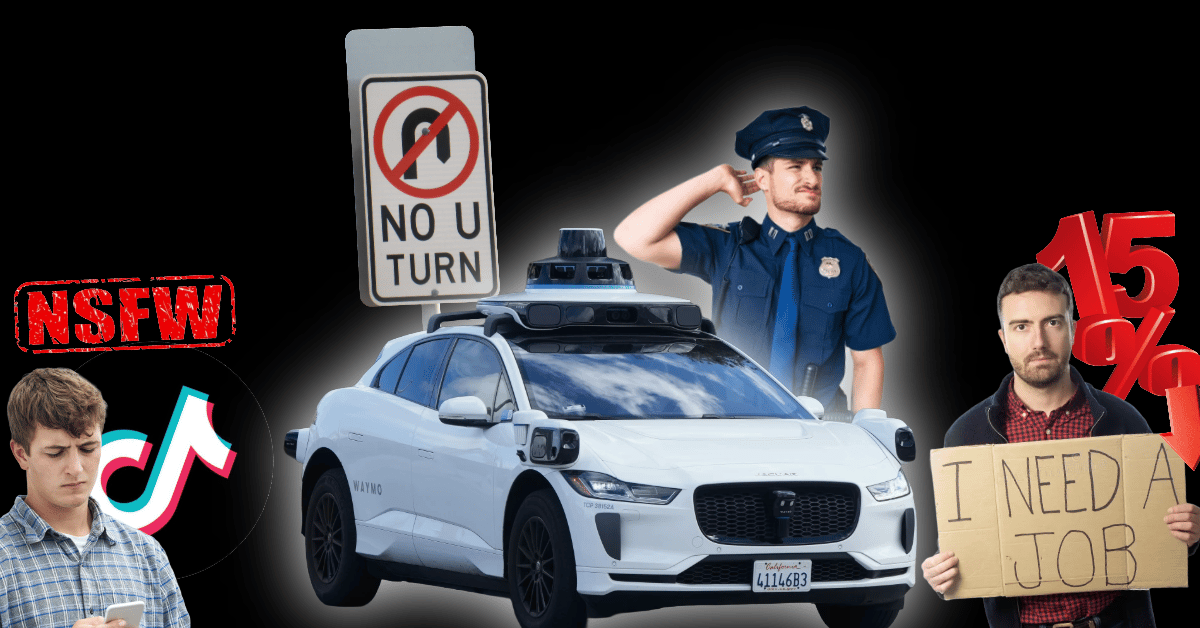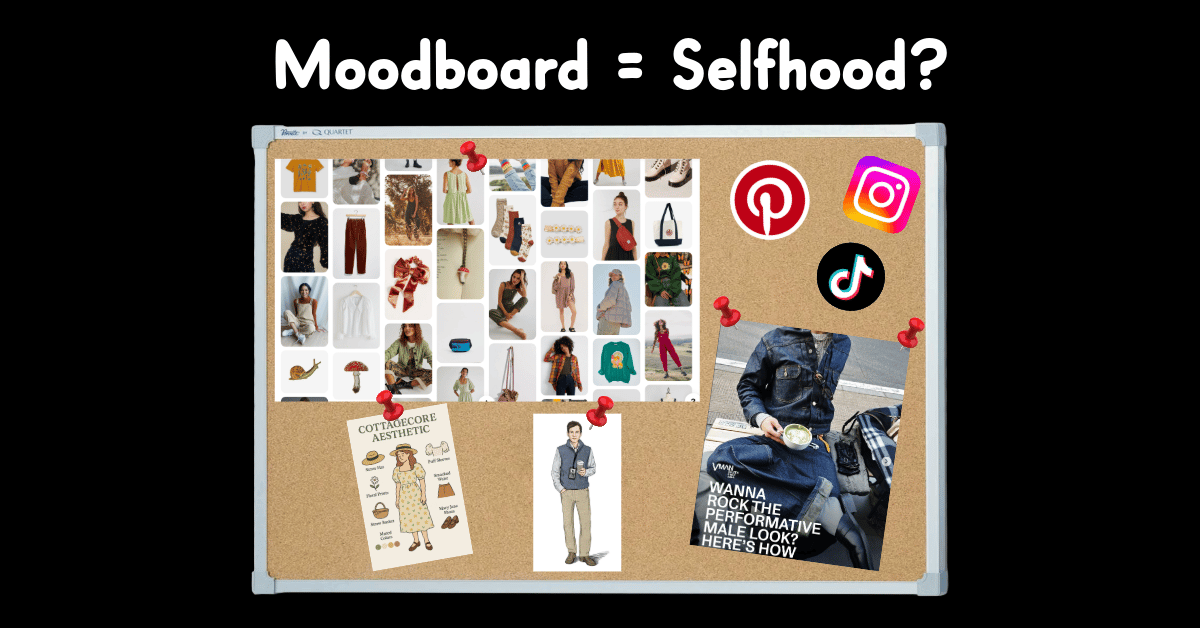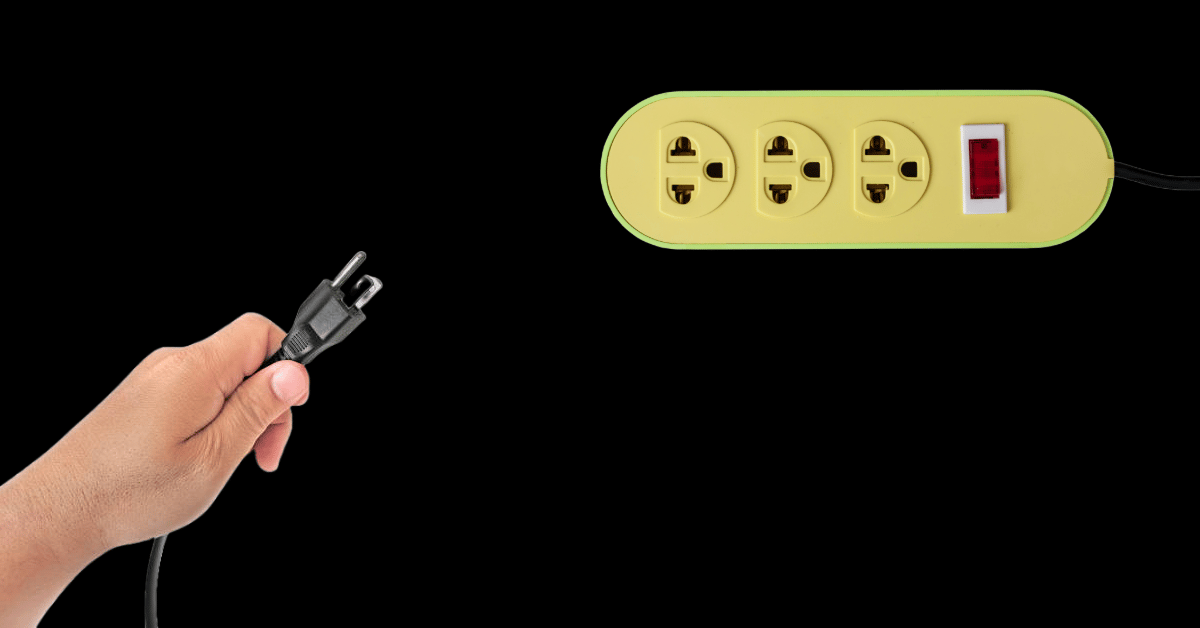
Be honest. Do you actually like that new watch/purse/pair of running shoes you just bought?
Or did the algo just tell you that you like it? Because it’s got you alllll figured out, you know. And it’s constantly telling you what you need to buy to continue curating the version of yourself you want to be. Of course, by design, this performative identity building is never over (there’s always 1 more product needed to unlock it, amiright?). On the flip side, as marketers, we can either exploit this reality, or we can decide to be part of our customers’ story, not try to write the whole dang thing.
- Charlotte Ellis, Editor ♡
FREE EVENT in Auckland next Wed👇

You’ve got great ideas. But if you can’t communicate them, what’s the point?
Whether you’re pitching clients, asking for investment, or trying to get your boss to back your pet project, the magic is in knowing how to get your message across clearly. In this session, Nathan James, Creative Director at The Attention Seeker, breaks down what it actually takes to be better at communication.
You’ll learn:
✅How to think sharper
✅How to communicate so people just “get it”
✅How to sell your ideas to your boss, potential clients—anyone
Whether you’re chasing a promotion, eyeing a career change, or wanting to start your own thing, this session is designed to help you think and communicate better.
15 Oct | 5:30-7:30pm | Grey Lynn, Auckland
WHAT’S HAPPENING IN MARKETING TODAY?
Agencies expected to keep cutting jobs, Driverless car goes viral & TikTok serves sexual content to kids

Forrester now forecasts a 15% reduction in agency jobs in 2026.
Oh the joys of marketing, where the world is on fire, and our jobs are increasingly at risk of being whisked away into oblivion! The culprit? Take a wild guess. You got it! Automation and AI are aggressively accelerating workforce reductions across agencies.
“After an average 8% headcount cut in 2025, Forrester now forecasts a 15% reduction in 2026. This shift is not just about efficiency — it’s about transformation.” Instead of selling services, says Forrester, agencies will pivot to selling solutions. One global holding company CEO sums it up this way: “By 2028, we’ll double profits and halve the people.” Haha… love that.
Awkward. California police pull over a self-driving Waymo for an illegal U-turn, but they can’t ticket.
No face no case, am I right??? In a now viral social media post, the San Bruno Police Department wrote that early Saturday morning, officers were conducting a DUI operation when a Waymo made an illegal turn in front of them. However, upon approaching the vehicle, they realised no ticket could be issued, because their “citation books don’t have a box for ‘robot’.” Lmfao.
TikTok searches pushed 13-year-olds toward pornographic content, report says.
Really??? Social media platforms?? Endangering minors??? With sexual content???? Shock. A new report has found that TikTok directed young users toward sexually explicit content through its suggested search terms.
“As part of the investigation published on Oct. 3, Global Witness said it had set up 7 new TikTok accounts in the UK posing as 13-year-olds – the minimum age required for setting up an account - on factory-reset phones with no search histories.”
As per CNN, “TikTok’s search suggestions were ‘highly sexualized’ for users who both reported being 13 years old and browsed the app using ‘restricted mode,’ which ‘limits exposure to content that may not be comfortable for everyone’ including ‘sexually suggestive content,’ according to TikTok’s support page.”
So, even with the “guardrails” in place to protect minors, they aren’t safe. Well, how can they be, when not only other users but the APP ITSELF poses a threat? Age restrictions could not come sooner tbh.
-Sophie Randell, Writer
Hey, do you like YAP?
If so, why not share it with a friend? The more we grow this thing, the more resources we can put into making it awesome for you. Even if every subscriber invites just 1 person to YAP, we’ll meet our growth goal for 2025. So, you in?
DEEP DIVE
The internet as a mood board for selfhood

When you hear “identity”, what comes to mind?
It’s what makes you who you are, right? Your personal and individual traits and qualities. But more and more, it’s beginning to feel like something you curate.
Online, we build ourselves the way we build Pinterest boards (usually via Pinterest boards): a collage of aesthetics, habits, and micro-signals stitched together to say, “this is who I am (or at least, who I want you to think I am).”
This is what I mean when I say internet has become a mood board for selfhood. It’s not just a mirror; it’s an endless archive of templates, characters, and archetypes to inhabit. And marketers, ever observant, have turned that fluidity into a business model.
Platforms like Instagram, TikTok, and Pinterest were once sold to us as tools for self-expression.
But they’ve quietly evolved into marketplaces of identity. Each post, purchase, and pin contributes to a version of yourself that exists as content. A performance optimised for visibility and coherence.
The line between taste and identity has essentially dissolved. We no longer buy products just because we like them, but because they say something about us. You’re not just buying Glossier; you’re buying the idea that you’re a cool girl. It's not just a Trader Joes tote, but a constructed piece of your identity. Every choice is a proxy for who you are and who you want to be seen as.
Don’t get me wrong, I don’t think this is inherently bad. Humans have always used symbols to communicate belonging. But the internet has industrialised that impulse.
What used to be personal expression is now algorithmic capital.
The more coherent your aesthetic, the better your engagement. And the modern marketing machine thrives on this collapse of identity and consumption.
We’re constantly sold the idea that transformation is just one purchase away. The language is subtle but insidious: “This serum is for the girl who has her life together.” “These sneakers make you the type of guy who wakes up at 5am.” “This coffee table book says you’re cultured, but approachable.”
Identity has become a subscription service. When you buy these products, you invest in the story they tell about you.
Cultural theorists like Jean Baudrillard called this “sign value”: the worth of an object is not in its use, but in the meaning it carries.
But the internet has taken that to its logical extreme. It’s not enough to own something; it must also signal something. Every object is but an aesthetic performance. And marketers, knowingly or not, have weaponised that desire for coherence.
Instead of selling to demographics we now sell to archetypes. The Clean Girl. The Tech Bro. The Cottagecore Dreamer. The Fermented Happy Gut Girl. Each with its own visual lexicon, moral tone, and consumer ecosystem.
The irony, of course, is that this performative selfhood is never complete.
Online identity is iterative, constantly updated, optimised, and rebranded. A little more Y2K this month. A little more minimalist next. A “new era” every time the algorithm gets bored.
That’s what keeps the consumer engine running. If selfhood is a product, it will always need upgrades. There’s always a new version of you to buy into.
But this also leaves us in a constant state of precarity… never quite finished, never quite enough. Do you feel insatiable? Like you’re always one step behind the next best thing? Yeah, that’s by design, sweetheart.
The mood board self is endlessly revisable, and therefore endlessly monetisable.
For marketers, this presents both an opportunity and a responsibility.
Brands that understand identity as fluid, not fixed, can build stronger resonance, but we also risk exploiting that fluidity. My take is to not dictate identity, but participate in its creation.
If you can, act less like a teacher and more like a collaborator; offering tools, aesthetics, and language that people can remix into their own self-expression. Think of the way Nike’s campaigns generally focus on capability rather than conformity. That’s the essence we want to capture.
If you’re building a brand in 2025, it’s worth asking:
Are you selling a product, or a personality?
Are you reinforcing archetypes, or expanding them?
Are you helping people express who they are, or trapping them in who they think they should be?
As algorithms continue to shape what we see and desire, it’s getting harder to tell where the brand ends and the self begins.
And maybe that’s the final paradox of digital identity; the more we curate ourselves, the less control we actually have over the raw material.
But there’s still beauty in it. The internet as mood board isn’t all bad; it’s creative, playful, and kind of fun that way. The trick is remembering that curation isn’t the same as authenticity, and that a brand (you) can be part of someone’s story without writing the whole freaking script.
Because, well, that’s just big and greedy.
-Sophie Randell, Writer
TREND PLUG
The life of a…

You knew this was coming.
It was only a matter of time before Taylor made her way into a trend plug this week. Love her or hate her, you can’t escape her!
The sound comes from The Life of a Showgirl (feat. Sabrina Carpenter) off her latest album. And it’s blowing up for one simple reason: it’s Taylor f*ckin’ Swift. When the highest-grossing artist on the planet drops a whole album, the algorithm listens.
This trend’s gold because, along with the Taylor Swift hype, it taps into identity and aspiration. “The life of a…” format lets anyone define their vibe, job, or delulu energy with a Taylor soundtrack behind it. It’s a free pass to romanticise your routine, even if your “showgirl era” is just answering emails in sweats.
How you can jump on the trend:
Film some quick clips or a selfie montage tied to your day-to-day, then add on-screen text that says, “The life of a ______.” Fill in the blank with your thing (freelancer, content strategist, office escape artist, professional TikTok scroller AKA social media manager).
A few ideas to get you started:
The life of a content strategist → use chaotic BTS clips from a campaign shoot
The life of a brand manager → footage of you pretending to relax while checking metrics
The life of a marketer → clips of you hyping other people’s viewership but internally crying at your own
-Nico Mendoza, Intern
FOR THE GROUP CHAT
😲WTF: The Sora AI Videos Are Getting Out Of Hand
✨Daily inspo: good advice
😊Soooo satisfying: Rainbow ASMR Poppers
🍝What you should make for dinner tonight: Chutney grilled cheese and creamy tomato soup
ASK THE EDITOR

What tips do you have for staying consistent with posting content? - Jessie
Hey Jessie!
There's no magic formula to staying consistent! At some point, you just have to carve out time and get it done. But one thing you can do to make that a bit easier is to come up with an easily repeatable content style. At TAS, we call this ERC. This is a content style that's easy to produce, and, ideally, one you can create in bulk. It should also be something you can do over and over, only changing one factor for each video.
This should fit your niche, but could be something like street interviews, simple games, reaction videos, or answering FAQs about your industry. When you've got this content style, you'll no longer need to reinvent the wheel every time you need to create content. You're essentially taking 90% of the thinking out of it, which makes it much more likely you're going to post more regularly. Then, remember that done is better than perfect. You will learn as you go, and that's ok. So stop overthinking and start doing!
- Charlotte Ellis, Editor ♡
Not going viral yet?
We get it. Creating content that does numbers is harder than it looks. But doing those big numbers is the fastest way to grow your brand. So if you’re tired of throwing sh*t at the wall and seeing what sticks, you’re in luck. Because making our clients go viral is kinda what we do every single day.